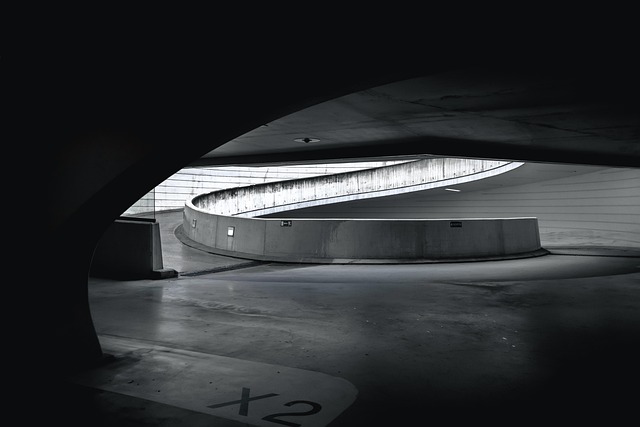Structural CAD drafting is a pivotal tool for designing robust steel truss and girder systems in large-scale projects. Advanced 3D modeling software allows engineers to optimize configurations for span, strength, and stability, streamlining calculations and load distribution. This meticulous process enhances efficiency, precision, and safety, ensuring structural integrity while prioritizing cost-effectiveness through precise component definition. Skilled drafting ensures girders handle substantial loads aesthetically, balancing functionality with form for visually stunning structures.
“In the realm of large-scale projects, efficient and robust structural solutions are paramount. This article delves into the intricacies of two key components: structural steel truss and girder detailing. Understanding the nuances of these designs is crucial for architects and engineers employing structural CAD drafting techniques.
We explore effective strategies for truss design, highlighting the importance of precision in creating complex, yet lightweight frameworks. Additionally, we examine girder detailing, focusing on both structural strength and aesthetic considerations.”
Understanding Structural Steel Truss Design
Understanding Structural Steel Truss Design involves comprehending intricate detailing and precise calculations. In large-scale projects, structural steel trusses serve as the backbone, supporting immense loads with minimal material use. Through advanced structural CAD drafting software, engineers create detailed 3D models, ensuring optimal truss configurations for span, strength, and stability. This digital approach revolutionizes traditional design methods, enabling complex geometric shapes and efficient load distribution.
By leveraging structural CAD, designers can navigate labyrinthine calculations, account for various load factors, and integrate girder connections seamlessly. This meticulous process results in robust trusses that enhance building efficiency while ensuring safety and longevity. In essence, modern structural steel truss design is a symphony of technology, precision, and engineering excellence tailored to meet the demands of ambitious construction projects.
CAD Drafting Techniques for Large-Scale Trusses
In the realm of large-scale projects, precise and detailed Structural CAD Drafting is paramount for designing robust structural steel truss and girder systems. Advanced computer-aided design (CAD) software plays a pivotal role in this process, enabling engineers to create intricate 3D models that accurately represent complex truss configurations. This digital approach facilitates thorough analysis, identifying potential weaknesses or conflicts before construction commences, thereby ensuring the integrity of the final structure.
With CAD drafting, every component—from web members and flanges to nodes and connections—can be meticulously defined, allowing for optimal material utilization and cost-effectiveness. Advanced features like parametric modeling enable quick adjustments to design changes, ensuring flexibility during project evolution. This meticulous structural CAD process is a game-changer in the engineering sector, fostering efficiency, precision, and safety in large-scale construction endeavors.
Girder Detailing: Strength and Aesthetics
Girder detailing plays a dual role in large-scale projects, ensuring both structural integrity and aesthetic appeal. In structural CAD drafting, meticulous attention is given to girder design to withstand immense loads and stresses. This involves selecting appropriate material grades, calculating moment of inertia for stability, and factoring in environmental conditions like wind and seismic activity.
However, beyond structural requirements, girder detailing also contributes to the overall visual impact of a project. Smooth transitions between nodes, well-defined joints, and careful consideration of fastener placement not only enhance the structural steel truss’s strength but also elevate its aesthetic value. This balance between functionality and form is crucial for creating visually stunning, durable structures that can stand the test of time.
Project Implementation: Ensuring Structural Integrity
When implementing large-scale projects involving structural steel trusses and girders, ensuring structural integrity is paramount. This begins with meticulous structural CAD drafting, where every detail, from member dimensions to joint types, is precisely defined and dimensioned. Skilled engineers employ advanced software tools to create detailed 3D models, facilitating a comprehensive understanding of the entire structure before construction commences.
Rigorous design calculations verify that the truss and girder systems can withstand anticipated loads, including dead weight, live loads, and environmental factors. These calculations are integrated into the CAD drawings, ensuring that every component is optimally sized and positioned for maximum strength and stability. This meticulous approach not only guarantees structural integrity but also paves the way for efficient fabrication, seamless assembly, and a robust final product capable of supporting vast structures without compromise.
Structural steel trusses and girders are essential components in large-scale projects, offering both strength and aesthetic appeal. By understanding advanced truss design principles, utilizing precise CAD drafting techniques, and focusing on detailed girder construction, engineers and architects can create efficient, safe, and visually striking structures. Structural CAD drafting plays a pivotal role in bringing these intricate designs to life, ensuring that every project meets its structural integrity goals while showcasing innovative engineering solutions.
